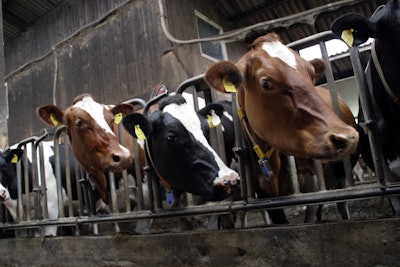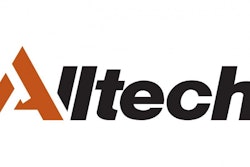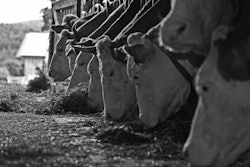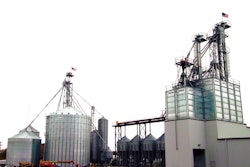
Each year, heavy metal contamination continues to be an issue for the global feed industry. In 2005, Russia banned all fresh Norwegian salmon due to high levels of lead and cadmium in imported fish samples. In 2009, Japan issued a warning after finding imported eggs from Brazil were contaminated with high levels of cadmium. Cadmium came up again in 2013 as Belgian authorities notified the European Commission that dietary minerals in animal feed had been found to contain abnormal levels. In 2013, nearly 200,000 pounds of Chilean chicken were recalled in the United States for dioxins, only because the levels found violated Chile’s domestic limits.
Concerning heavy metals, dioxins and PCBs (dioxin-like polychlorinated biphenyls), the levels that are illegal in regions, such as Europe, may not be illegal in regions such as the United States. For example, the United States Food and Drug Administration does not have specified limits for heavy metals. They do, however, state under Section 402(a)(1) of the Food, Drug And Cosmetic Act (21 U.S.C. 342(a)(1)), a food shall be deemed to be adulterated “if it bears or contains any poisonous or deleterious substance which may render it injurious to health; but in case the substance is not an added substance such food shall not be considered adulterated under this clause if the quantity of such substance in such food does not ordinarily render it injurious to health.”
Until global coordination is reached and limits are set, the most troublesome and costly element to businesses from heavy metals, dioxins and PCBs contamination is damage to their reputation and ultimately their brand.
In the meantime, traceability — the ability to verify the history, location or application of an item by means of documented recorded identification — should be a chapter in every feed manufacturer’s standard operating procedures. Where Food Comes From, Inc. recently announced the launch of “Feed Verified,” a new resource for livestock producers, feed companies and food brands alike to confirm a particular ingredient or feed product meets a specific verification or certification requirement. The first of its kind, Feed Verified is an innovative resource that will house a real-time listing of approved feed products and ingredients by name, while indicating the verification or certification programs for which each product is approved.
As feed manufacturers, it is important to know the source of feed ingredients and additives and their certification standards. It is also essential to know their crisis management program.
Contamination concerns
Dioxins can occur naturally and can also be produced by human activities. Common sources include volcanic eruptions, forest fires, exhaust emissions, incinerators and in the manufacturing of chemicals, pesticides and paints. Dioxins can also be formed during the processing of inorganic minerals. Metals, especially copper, can act as catalysts in dioxin formation.
Dioxins are termed “persistent organic pollutants” because they are very stable, resisting physical and biological breakdown to remain in the environment for long periods of time. Dioxins are known teratogens, mutagens and carcinogens in humans and animals.
PCBs differ from dioxins in that they are intentionally produced for the manufacture of transformers, inks, plasticizers, lubricants and building materials. PCBs are present in inorganic trace mineral sources due to the recycling of metal sources, such as copper wiring. Additionally, at least 70% of copper sulfate is produced from renewable sources. PCBs are also a known carcinogen in humans and animals.
Heavy metals are a concern because they are found in the soil and can contaminate inorganic trace mineral sources and enter groundwater as a pollutant. Mercury, lead, cadmium and arsenic can cause detrimental effects such as blindness, anemia, soft-shelled eggs, kidney and renal damage, and sudden death in livestock.
Mined minerals tend to be higher in heavy metal contamination, and the mining process itself can cause contamination with dioxins and PCBs. Dioxins can also be formed during the recycling of materials. Often materials such as PVC coating are not removed during the recycling process forming dioxins.
Five-year survey
Recently, Alltech completed its fifth annual Heavy Metal Survey throughout the Asia-Pacific region on samples of complete feed, premix, inorganic minerals and organic minerals. Almost 500 samples were submitted as part of the 2015 survey and analyzed for arsenic (As), cadmium (Cd) and lead (Pb) with Inductively Coupled Plasma Optical Emission Spectrometry (ICP-OES).
Results show 30% of 498 samples tested were contaminated with at least one heavy metal above acceptable EU levels. A closer look into the results shows that 14% of inorganic minerals, 7% of organic minerals, 15% of premixes and a staggering 68% of the complete feeds analyzed were contaminated. Such contamination has been shown to have not only an impact on animal performance but also on consumer safety.
During the survey, extremely high levels of heavy metals were detected. For example, 2,019 ppm of cadmium was detected in a copper sulphate sample while a zinc oxide sample revealed 3,023 ppm of lead. High contamination levels are commonly found in inorganic minerals due to the mining and manufacturing process as well as less stringent quality assurance applied to feed-grade mineral sources.
It is important to remember that this survey is only a snapshot in time. Heavy metal contamination is an ongoing risk. The only way to ensure minerals are free of heavy metal, PCB and dioxin contamination is to have a stringent testing protocol.
Quality control check
Inorganic mineral sources are used to manufacture organic mineral products. Due to this, the contamination risks associated with the inorganic minerals are a concern for manufacturers of all mineral supplements. When choosing an inorganic or organic mineral, special attention should be paid to the quality assurance systems implemented by the manufacturer. Does the manufacturer use only approved suppliers? Does the manufacturer audit its suppliers?
Traceability from raw materials to finished product is a must for all feed additives. Third-party certifications from reputable groups demonstrate a manufacturer’s commitment to quality. Brief descriptions of the most commonly used quality assurance systems worldwide follow:
- Hazard Analysis & Critical Control Points (HACCP)
This risk management system was originally designed as a means of addressing the limitations in end-product testing to ensure safe food supplies for space expeditions. This proactive system examines the production process to identify the last point of control for any form of potential contamination. A control step is put in place at each point of vulnerability to reduce the risk of contamination; each control step is continuously monitored to ensure there is no deviation from acceptable limits. HACCP has become so effectively recognized that it is now commonly used in the food sector. Moreover, it is a legal obligation in the feed sector in many countries. As with any good system, documentation and records must be kept.
- Good Manufacturing Practice (GMP)
GMP regulations were promulgated by the U.S. Food and Drug Administration. These guidelines apply to manufacturers, processors and packagers of pharmaceuticals, medical devices, some food and blood. GMP regulations are widely recognized and applied throughout the world. However, in many regions, because GMPs do not generally apply to the production of feed and feed additives, manufacturers may be unable to receive certification.
- ISO 22000
This standard for food safety was developed by the International Organization for Standardization. It specifies requirements for a food safety management system that includes HACCP principles. ISO 22000 is not sector specific, meaning that the standard is not written specifically for feed or feed additive producers. Although this standard does have some international acceptance, it is not accepted within the EU.
- ISO 9001:2000
ISO 9001:2000 form the foundation of the family of ISO 9000 standards by establishing guidelines for creating and maintaining a quality management system. They do not include HACCP principles and are not sector specific. Although these standards have some international acceptance, they are not accepted within the EU.
- European Feed Additive and PreMixture Quality System (FAMI-QS)
This quality system covers premixes and feed additives, meets ISO requirements and includes HACCP principles. The FAMI-QS code, established by the feed additive industry, has been accepted by the EU commission as the definitive guide for placing feed additives on the EU market. By simply implementing the FAMI-QS system, compliance with the EU Feed Hygiene Regulation (183/2005) is ensured along with access to European feed additive markets.
- Feed Materials Assurance Scheme (FEMS)
This quality assurance program addresses the safe manufacture and delivery of animal feed ingredients in the U.K.; the program meets ISO requirements and is based on HACCP principles.
- Safe Feed/Safe Food
This certification is a voluntary, independent program launched by the American Feed Industry Association to demonstrate and ensure continuous improvement in the delivery of a safe and wholesome feed supply for the growth and care of animals. The program includes some elements of HACCP, but applies to feed and feed ingredients in North America only.
Quality control has to be at the top of each feed manufacturer’s list when choosing trace minerals. As a result of past and current food crises, animal feed is an important area that affects the integrity and safety of the food chain. In addition, legislation concerning the production of feed is becoming more stringent.
To ensure confidence in product selection, it is essential to evaluate and understand product-specific scientific data and to know the reputation of the supplier. The supplier should have a full quality assurance program in place and be willing to provide details, certifications and contaminant testing results. Feed can only ever be as safe as the raw materials used in the manufacturing process.


















